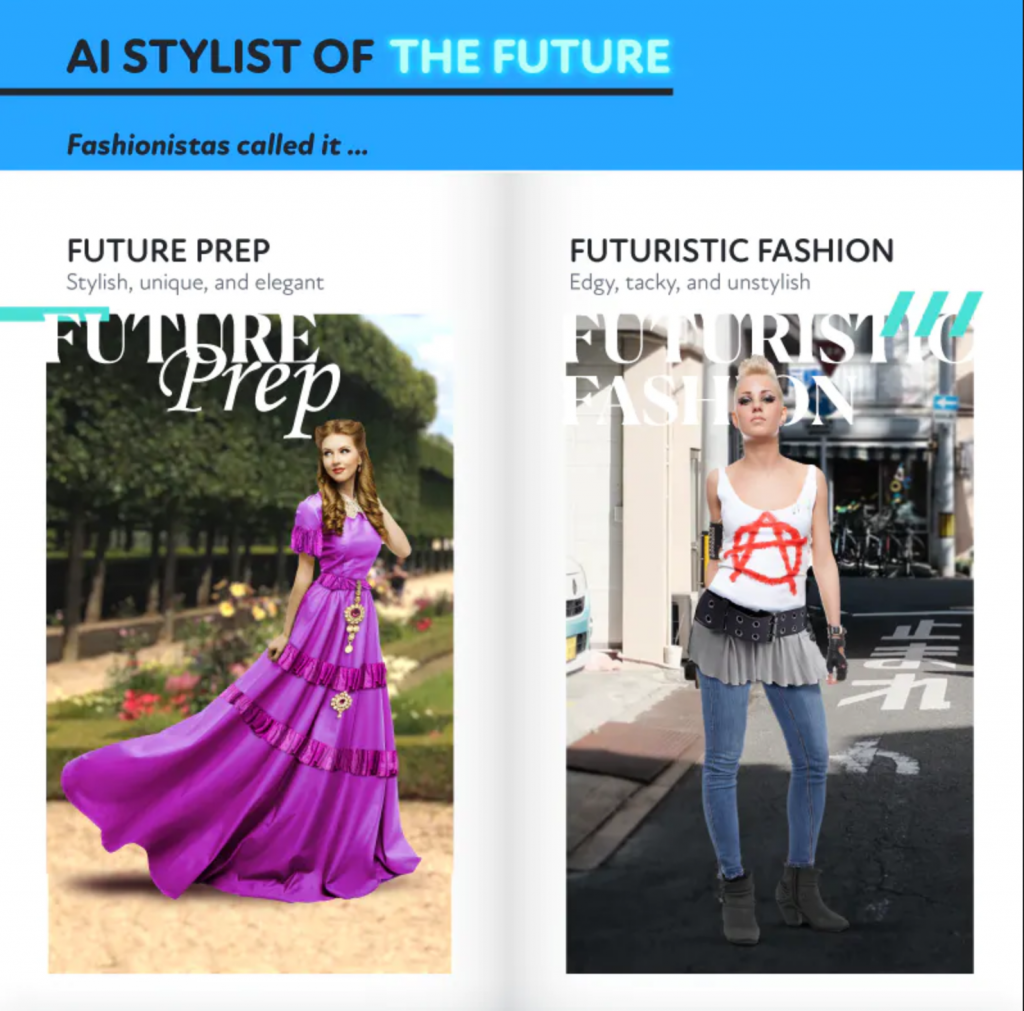As one of the last industries, the fashion industry is starting to adopt technologies that will predict and design the fashion of the future. Unlike for other industries, fashion technology is still a relatively new and emerging field. Newer technologies like AI can be seen being applied in almost any industry today, and fashion companies are now beginning to understand the potential advatages that fashion technology can bring them. Fashion brands are reshaping their approach to product design and development by predicting what customers will want to wear next season.
Trend forecasting
While it may seem that new fashion trends appear just out of nowhere. In reality, the clothes we see on the runway or on the pictures of the most influential influencers are usually the result of months or years of intense observation and planning by trend forecasters.
In comparison to other emerging technologies in the fashion industry, trend forecasting is typically labour-intensive, involves manual or digital observation and data collection from fashion designers, influencers and celebrities. In order to predict trends, trend forecasters take note of runway shows and outfits worn by celebrities, but the process also includes the collection of data on entertainment, technology, social and cultural changes, politics and consumer behaviour. This data is used as the starting point to deduct what colours, shapes and fabrics will be trendy for up to two years (four seasons) in advance.
AI – a new chance for designers
With rapid changes in the way how customers buy clothes, consume content and the overall changing consumer behaviour, fashion designers want to be able to understand what their consumers want better, despite the new rules of engagement with the customer. While the way customers behave changes, simultaneously the competition in the fashion industry is increasing, with more small business brands that serve local markets emerging, increased globalization through world-wide shipping opening the markets to international fashion brands and fast fashion brands picking up and producing latest trends in the span of days. The potential in the Fashion industry is huge, the industry is expected to reach 2.25 Trillion US$ by 2025. Large fashion companies are aware of these shifts and in order to maintain their market positions, they need to be able to fulfil and meet their customers’ needs based on their ideal fashion desires and current trends.
AI is the newest tool to predict customer needs. However, while in other industries AI is used to create uniformity and consistency in the created output, in fashion AI is used to create unique and outstanding clothes for all target groups in line with current and future trends. Furthermore, AI can help to save time and money for designer by predicting what clothes are likely to sell well and which colours or fabrics will appeal to consumers before they are produced, taking into account factors such as social media popularity and appearance in magazines.
A concrete example of an AI tool used in fashion, is IBM’s Watson AI. It can analyse hundreds of thousands of images from runway shows to generate insights into what colours, patterns and silhouettes fashion brands should stock for the coming season. The algorithm ignores irrelevant data such as background types and skin tones of models, while finding and recording the most prominent colours in each image, eventually returning data on how often each colour occurs. Similar analysis can be performed on fabric patterns and find similarities between different runway shows.
RushOrder Tees – what will people wear in 2030:
Another interesting application of AI in the fashion industry is the work of the company RushOrderTees. The American-based high-quality custom apparel brand has been using AI, Generative Pre-trained Transformer (GPT)-3, and StyleGan in combination to not only design new clothes for their brand but also to predict trends.
But how does it work? Generative Pre-trained Transformer 3 (GPT-3) is a language model created by OpenAI that uses deep learning to generate human-like texts. Using identical prompts, GPT-3 was used by RushOrderTees to produce output for current and future fashion trends. This output was lightly edited for length and repetition, but not for content or fact-checking. These texts were then used to create images using StyleGan, an AI that generates images based on text inputs. The StyleGan-generated images were given by RushOrderTees to human designers to clean up and update to ensure they looked appropriate for when presented to customers.
The following image is an example of the outfits that were created by the AI to represent the current trends in 2021:

Afterwards RushOrderTees has surveyed men and women on how they perceived the created outfits, which lead to the following results:
· On average, 78% of women and 71% of men thought the AI-generated outfits were stylish.
· On average, 71% of women and 67% of men would wear the AI-generated outfits
Regarding the AI-generated outfits for women, consumers felt they were all fairly accurate representations of what current fashion trends look like. Respondents of the survey also rated almost all the AI-designed looks as 6 out of 10 or higher when asked if they would wear them.
RushOrderTees went also one step further, and asked the AI to predict the trends for 2030. You can see the result of the AI below. But what do you think, will AI in the future going to be able to predict the next fashion trends or will fashion remain an answer to societal changes that no AI can predict?

References:
Next looks: Can AI technology predict the future of fashion?
https://www.forbes.com/sites/bernardmarr/2021/03/26/three-ai-and-tech-trends-that-will-transform-fashion-industry/?sh=6fd00a1f746c
https://www.forbes.com/sites/anniebrown/2021/09/15/the-changing-face-of-high-tech-fashion-how-two-entrepreneurs-are-bringing-diversity-and-ai-to-clothing-design/?sh=985443e44b40
https://www.statista.com/topics/5091/apparel-market-worldwide/
https://www.rushordertees.com/ai-fashion-trends/
Tech-savvy fashion forecasters already know what you’ll be wearing in two years
https://www.ibm.com/blogs/think/2017/03/cognitive-ny-fashion-week/

